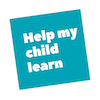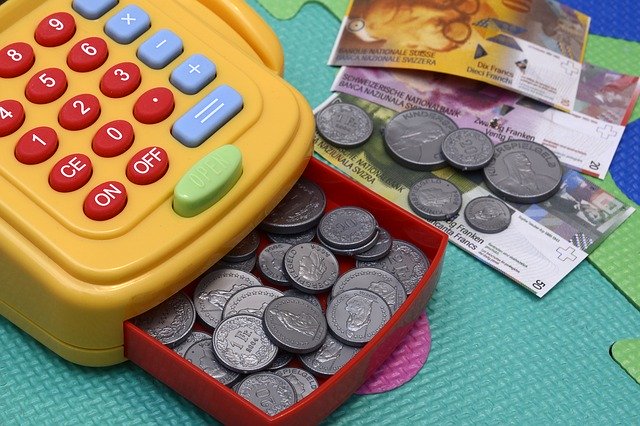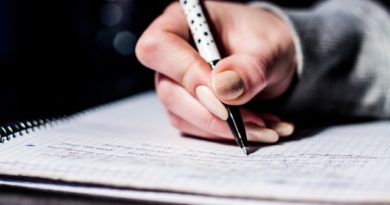Our Favorite Math-ish Toys and Games for Dyslexic and Math-challenged Kids
Some people are amazing. When my child was five, I remember talking with a girlfriend, who casually mentioned that she played math games with her son when they drove around on daily errands. I was shocked. Math … games? Like, do math voluntarily? I kept her on the phone until she explained what she was doing.
As a math-challenged person, I learned a lot that day. I still wasn’t able to convince my child (who turned out to have dyscalculia), that adding was fun, but it made me respect the power of play.
I also learned the value of having games around that sneak a little number thought into my child’s day. Especially non-obvious math-friendly games that can be played by dyslexic children. Another child or two can lure your child into playing a game that might be a little challenging, and it’s a painless way to exercise skills. When we started, we bought a lot of heavy-handed “games” that my child refused to play, so we learned to find real games, that just happened to also develop skills!
If you’re looking for a good educational toy, each of these games can do double duty as a good holiday or birthday gift, AND as a way to exercise skills. We’ve called out which skills are exercised right after the picture.
And each of these games gets the kid/family-approval stamp: they’re actually fun!
As Amazon Associates, we earn if you purchase qualifying purchases from Amazon.
Qwixx
Qwixx is a simple family dice game. It’s got different colored dice, a scorecard, and you roll as fast as you can to fill out your number line. Each player keeps rolling, with no pausing, and when you get to the final number, you get to lock off a row and win.
For a child who might not be comfortable with numbers, this is a great, simple race game.
Teaches: Number recognition and fluency. Children learn to associate numbers with dot patterns on dice.
Q-bitz Junior

For some children, this is a very difficult skill to learn. Q-bitz Junior is a very simple game, and you can break it down further (e.g. just put the dot in the correct corner.)
Teaches: spatial reasoning, pattern identification, and pattern matching.
Shut the Box

The game comes in different sizes, for different ages. This version is for children 5-7 years old. Especially if your child has learning challenges, a younger version can be just as fun. You can also buy a single version, but it’s much more fun to play against someone.
Teaches: pattern identification, pattern matching, and numerical fluency — the ability to think quickly using numbers.
Marble Circuit Logic Game

Teaches: spatial thinking, problem solving, tenacity, sequencing, and memory.
Blokus

Teaches spatial reasoning, fine motor skills, pattern recognition, strategy
Building Toys
There are so many building toys that our children liked, that we’ll only mention a few here. Rule of thumb: Whatever your child likes to build with, supply it. And let your child create things using their imagination. Sarah’s sons bought Lego kits, made the lego kits, and then insisted on putting them into boxes in the garage, never to be touched. Um, nope. That’s not why building toys were created. Janet’s children, on the other hand, were given an enormous suitcase of legos by the man down the street, and made creative designs for years.
When our children were younger, Magnatiles were their favorites, but there’s a new competitor available. According to reviews, the Playmags tiles are less expensive, stronger, and come with some very neat add-ons (like stabilizers.)
These enormous cardboard building blocks were a huge hit with our children. Perfect in the living room during the winter fort months!
Elongdi makes a good-quality, magnetic building sticks product. Ball and stick magnet building sets were always beloved by our older children. They’re light, versatile, easy to tuck into packing for trips, and a lot of fun. However: don’t get them if you have toddlers in the house (swallowing magnet balls can be deadly), or if you’re irritated by small pieces that can go anywhere. We finally ended up keeping them in ziplock bags!
Exercises: spatial skill development, fine motor skills, building logic and reasoning, focus, and imagination.
Role Playing
Kid’s Science Experiment Kit with Lab Coat
Every kid should get to be a scientist, and this is a great kit. The Unglinga Kid’s Science Experiment Kit comes with a book containing simple science experiments, and look at all of the great science tools! It’s very simple for a parent to Google “Simple science fun” on Youtube and extend the function with their child. The tools are sturdy and fun, and your child can have a great time on their own.
Teaches: introduces a new interest or passion, teaches sequencing (through experiments), fine motor skills (tweezer, eye droppers, pouring liquids into beakers and test tubes), exercises the imagination.
Learning Resources Pretend & Play Teaching Cash Register

We’ve used the Learning Resources cash registers for years, and they take punishment very well! Sturdy, and logical. You can even buy them with extra money and some canned goods if you want to practice money with the whole family. (And you can go to the market and find out the real price for those canned goods, for even more experience with money!)
Here’s an article with some more ideas for how to use coins and money to teach your child about numbers.
Teaches: coin and denomination recognition, number sense, using visual and spatial senses while learning math concepts.
Also, dyslexic children learn better when there’s a bigger picture. Learning WHY it’s important to know how to manage numbers around money helps children learn.
Math Learning Tools as Gifts
By now you can see that the games aren’t really intense teaching tools. Instead, the games help kids be comfortable playing with numbers. This is a big goal. We have to use numbers our whole life, and feeling comfortable, recognizing numbers, reacting to them, and so forth can be a skill that takes LD kids a really long time. HOWEVER, if you’re like me, you still want some TEACHING games. Or perhaps maybe just fun tools to help teach math.
Here are some good ones:
Professor Poplar’s Astounding Arithmajig

This kit is similar to a Cuisenaire kit, which is used to spatially teach math to children. Except that this kit comes with wooden +’s and -‘s. It’s a good introduction to spatial math teaching, however. Read more about Cuisenaire here, and here’s a sample lesson.
Teaches: number sense, visual-spatial skills, addition and subtraction
CoolToys Monkey Balance
The Monkey Balance toy is rated for ages 3-5, but we have found that it’s actually good for second, third, and sometimes fourth graders. Children with dyslexia and dyscalculia don’t automatically associate three *things* with the number three, so this can help without being too babyish. The pictures, the colors, and the action give it multisensory help for staying in your child’s brain.
The toy comes with a group of simple math games. Helpful, and costs a lot less than tools bought from a teaching store!
Teaches: early number recognition and number sense, understanding quantities and making comparisons,
Early Math Mathlink Cube Activity Set
Visual-spatial activity is often a dyslexic child’s greatest strength, but it can be another LD child’s greatest challenge. Either way, these Mathlink cubes come with a series of cards containing pictures to build. It teaches addition, subtraction, sequencing, and the beginnings of hands-on math learning. Plus, it’s fun to build things with the blocks. You can even let your child build things, and then have them explain their design to you, or help you duplicate it.
Teaches: visual-spatial skills, pattern recognition, sequencing of actions, understanding wholes and parts, and math
Möbi

Multiplication and Division Toys
These Montessori multiplication and division toys let your child visualize multiplication with marbles on a board. Beautiful, fun to play with, and a great step towards understanding multiplication and division. If your child is like many, you can start with the simplest multiplication and division problems, show how they look in many different ways. These boards are a step towards breaking out “half of the pie” into individual numbers. What does half of the pie look like for four items? How about 10?
Teaches: number sense, logic, sequencing, number sense, math skills
Learning Resources
The Learning Resources website has great math tools to use at home. From a play checkbook kit, to a kit that contains everything you need to measure, Cuisenaire kits for math manipulation, a genuine balance that you can use to learn algebra, play money kits, and so forth, Learning Resources tools can be the basis of great at-home learning.
Sometimes the Old Favorites are the Best
It turns out that many of the simple, old-fashioned games are the best at helping to develop the brain. Some of the best games for a child include:
Cards

– Go fish
– Old mail
– Hearts
The Ultimate Book of Family Card Games is filled with instructions, in case you don’t have all of the old-fashioned card games memorized. Anybody can play cards, and it’s a great family habit that you can do once a week at a special time.
Teaches: memory, pattern matching, sequencing, number fluency, teaches child to associate a pattern with a written number, and helps a child with number sense.
Dominoes
Learning numbers by using dice patterns is something that can really help many children. As a matter of fact, one math tutor once recommended that we ONLY use dice patterns for numbers. So eight would always look like this:

This type of picture can help your child remember the “meaning” of a number (eight dots.) The dots are also a more spacial representation of number than the written number 3.
If your child has problems developing number sense, they might not realize that three is bigger than eight. Dice and dominos can help with that. You can clearly see that there are more dots on the domino with 8. Playing again and again can help a child internalize “how much” a number is.
Dominos are Easy!
Here’s a video showing the basic dominos game, in which players match a domino to the domino on the table.
Another fun (and more challenging) domino game is called Mexican Train. (Note: Yes, you can call it a different name.)
Look for dominos with different colors for each number. This lets children associate a color with a number and a pattern, strengthening association and memory.

Monopoly
Yes, old-fashioned Monopoly helps children develop math skills. Remember: Monopoly is all about money. Learning money skills is great! And competitive children love Monopoly. Monopoly is often a family favorite, and lets children play with the older family members.
You might not know this, but in today’s world, there are limitless Monopoly versions. From a Frozen version, to Toy Story, to the new Star Wars version, Monopoly now is almost custom. And there’s even a Junior version of the game.
Teaches: reading, strategy, math, and money skills
Spirograph
Almost every child in the seventies had a Spirograph game. It lets children draw wonderful pictures based upon math! Great fun and highly recommended.
Teaches: Hand-eye coordination, shapes, makes children think about how different shapes rotate in space.
Memory Games
Educational Insights Brainbolt
The Brainbolt memory game lights up in a pattern that your child needs to memorize and follow. It’s a great memory exercise game and can travel anywhere. Many dyslexic and LD children have problems with working memory.
Teaches: exercises visual and spatial working memory.
Simon
Simon is a classic pattern-matching game. Lights flash, it makes noises, and you try to memorize longer and longer sequences. Even if you only remember a couple of patterns, you’re still exercising your brain.
Teaches: pattern matching, focus, visual working memory, working memory
But You Really Don’t Have to Buy Anything


















Pingback:What Can an LD Diagnosis Do (or Not Do) For Your Child? - Help My Child Learn